Visiting Kumul Han Dynasty Tombs: Tips for an Enriching Experience
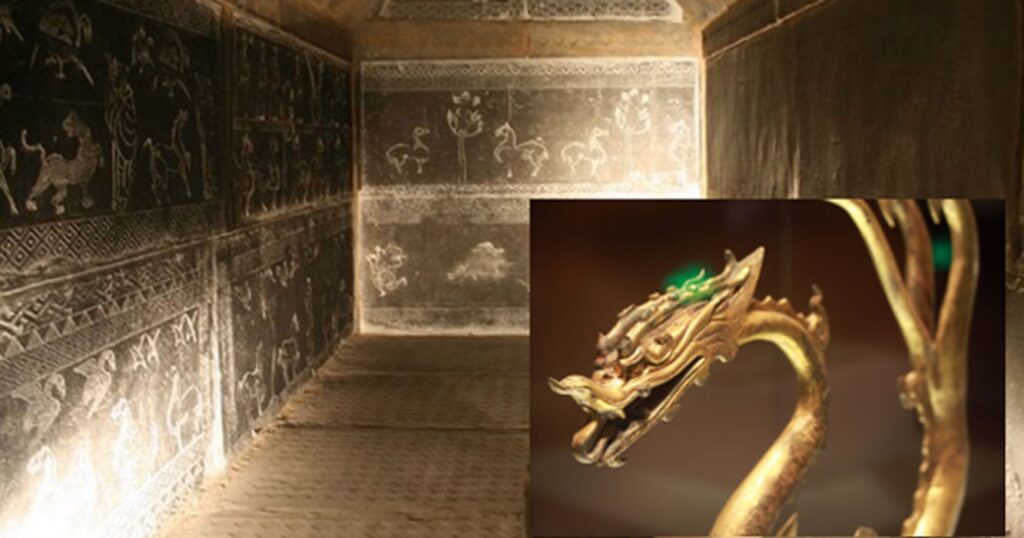
An Essential Guide to Visiting Kumul Han Dynasty Tombs
Nestled in the heart of Xinjiang, the Kumul Han Dynasty Tombs beckon travelers with their intriguing history and stunning architecture. As you step into this ancient burial site, you are transported back in time to the Han Dynasty, a period renowned for its cultural and technological advancements. The tombs, carved into the rugged terrain, tell stories of a civilization that once thrived in this arid landscape.
Unlike more crowded tourist spots, the Kumul Tombs offer a serene and contemplative atmosphere, perfect for those seeking a deeper connection with China’s rich past. Here, you can marvel at the intricate burial arrangements, which include kitchens, stables for chariots, and even toilets—an impressive testament to the beliefs surrounding the afterlife during the Han period. The tombs themselves are remarkably preserved, housing artifacts that provide insight into the daily lives and customs of the people who lived over two millennia ago.
Whether you are an intrepid historian, a culture enthusiast, or simply a curious traveler, the Kumul Han Dynasty Tombs promise an unforgettable experience. Prepare to explore not just the tombs, but also the beautiful surrounding gardens and museums that enhance your understanding of this remarkable site. As you wander through the quiet corridors and admire the stunning stone sculptures, you’ll find that the Kumul Tombs are more than just a historical landmark—they are a gateway to the enduring legacy of the Han Dynasty.
In This Guide
- An Essential Guide to Visiting Kumul Han Dynasty Tombs
- The Rich History and Legends of Kumul Han Dynasty Tombs
- Main Highlights: What You Absolutely Can’t Miss
- Planning Your Visit: A Practical Guide
- Tickets: Prices, Booking, and Tips
- How to Get There: A Complete Transportation Guide
- Local Cuisine and Accommodation Nearby
- Frequently Asked Questions
- Final Thoughts on Your Trip
The Rich History and Legends of Kumul Han Dynasty Tombs
Nestled in the arid landscapes of Xinjiang, the Kumul Han Dynasty Tombs (哈密汉墓群) provide a captivating glimpse into the rich tapestry of China’s ancient history. These tombs, dating back to the Han Dynasty (206 BC – 220 AD), are not just burial sites; they are a testament to the sophistication and cultural reverence of the era. The Han Dynasty is often celebrated as a golden age in Chinese history, marked by remarkable advancements in politics, economics, and culture, and the Kumul tombs serve as physical embodiments of this legacy.
The tombs are believed to belong to noble figures of the Han period, showcasing the era’s funerary practices that reflect a deep connection to the afterlife. Much like the grand tombs of pharaohs in Egypt, the Kumul tombs were constructed with meticulous care to ensure that the deceased would be well-equipped for their journey into the next world. Archaeologists have uncovered fascinating details, such as cooking facilities, stables for horses, and intricate drainage systems, all designed to serve the needs of the departed. These elaborate structures reveal the belief that life continues after death, necessitating the inclusion of everyday comforts in the burial sites.
One of the tombs, thought to be that of a local king or noble, offers a unique architectural style that blends Han Chinese traditions with local influences, illustrating the cultural exchanges that took place along the ancient Silk Road. This intersection of cultures is particularly significant, as it laid the groundwork for the diverse and rich tapestry of traditions that continue to shape the region today.
Legends surrounding the Kumul Han Dynasty Tombs add an enchanting layer to their historical significance. Local folklore speaks of hidden treasures buried with the nobles, drawing treasure hunters and adventurers to the site over the centuries. Tales of restless spirits seeking to protect their treasures have also permeated the local culture, adding a mystical aura to the already intriguing location.
Visitors to the Kumul tombs will find themselves enveloped in an atmosphere steeped in history and legend. Walking through the expansive site, one cannot help but feel a connection to the past, as the whispers of ancient rituals and the stories of those interred linger in the air. The tombs stand as a reminder of the grandeur of the Han Dynasty and the enduring legacy it has left on the cultural landscape of China.
For those seeking to delve deeper into this ancient world, guided tours are available, providing insights into the architectural marvels and the historical context of the tombs. Exploring the Kumul Han Dynasty Tombs is not merely an excursion; it is an opportunity to connect with history, to walk in the footsteps of those who once wielded power, and to reflect on the rich heritage that continues to resonate through the sands of time.
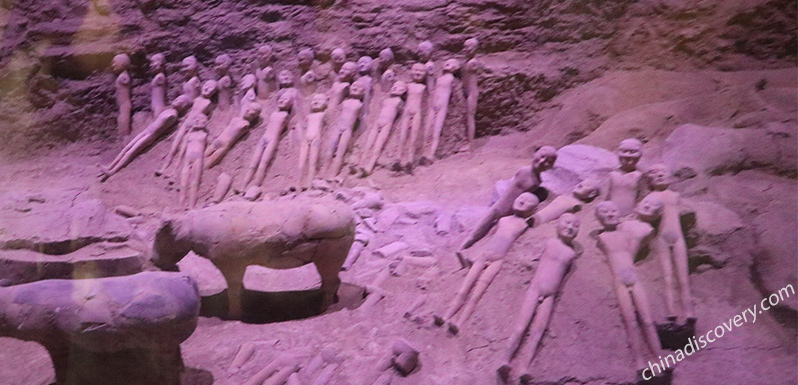
Kumul Han Dynasty Tombs.
Main Highlights: What You Absolutely Can’t Miss
Exploring the Kumul Han Dynasty Tombs is a journey into China’s rich historical tapestry, showcasing the grandeur of an ancient civilization. Here are the main highlights that you absolutely cannot miss during your visit:
1. The Tomb Complex
The Kumul Han Dynasty Tombs are expansive burial sites that reflect the architectural ingenuity of the Han Dynasty. Each tomb is a testament to the elaborate burial customs of the era, featuring intricate carvings and thoughtfully designed chambers. Take your time to wander through the tombs, marveling at the preserved artifacts that illustrate the lives of those interred within.
2. The Burial Structures
What sets these tombs apart is their sophisticated design. Unlike typical burial sites, the tombs include features such as kitchens, drainage systems, and even stables for horses. This design mirrors that of the Egyptian pyramids, emphasizing the importance of providing for the deceased in the afterlife. Be sure to notice the “his and hers” burial caskets, symbolizing the companionship even in death.
3. Exquisite Artifacts
Inside the tombs, you’ll find a remarkable collection of artifacts that have been carefully excavated and preserved. From pottery to jewelry, each piece tells a story about the customs and daily life of the Han Dynasty. Consider joining an audio tour in English, which is noted for its informative commentary, comparable to visits at renowned sites like Versailles.
4. Beautiful Surroundings
Beyond the tombs themselves, the surrounding area is equally captivating. The site features a beautifully landscaped garden adorned with stone sculptures that enhance the serene atmosphere of the complex. It’s the perfect spot for a leisurely stroll, allowing you to reflect on the historical significance of your visit.
5. The Museum of Artifacts
Don’t miss the nearby museum dedicated to showcasing artifacts from the Han Dynasty. This exhibit offers deeper insights into the cultural and social aspects of the time. The displays are well-curated, providing context to the items you see in the tombs.
6. Accessibility and Visitor Experience
The Kumul Han Dynasty Tombs are designed for visitor convenience. The site is not crowded, allowing for a more intimate experience compared to other popular tourist destinations. Expect to spend about an hour exploring the tombs, making it an ideal stop even for those with a tight itinerary.
7. Guided Tours
For a richer experience, consider hiring a knowledgeable guide. They can provide invaluable insights into the history and significance of the tombs, helping you understand the intricate details that might otherwise go unnoticed.
8. Cultural Significance
These tombs are not just burial grounds; they are a window into the political and cultural dynamics of the Han Dynasty. The tombs of the Kings of Chu reveal the hierarchy and governance of the time, making your visit not only a historical exploration but also a lesson in ancient Chinese politics.
Conclusion
The Kumul Han Dynasty Tombs offer a unique glimpse into China’s past, filled with fascinating stories, remarkable architecture, and rich artifacts. Whether you’re a history buff or a casual traveler, this site is a must-see that promises an enriching experience.
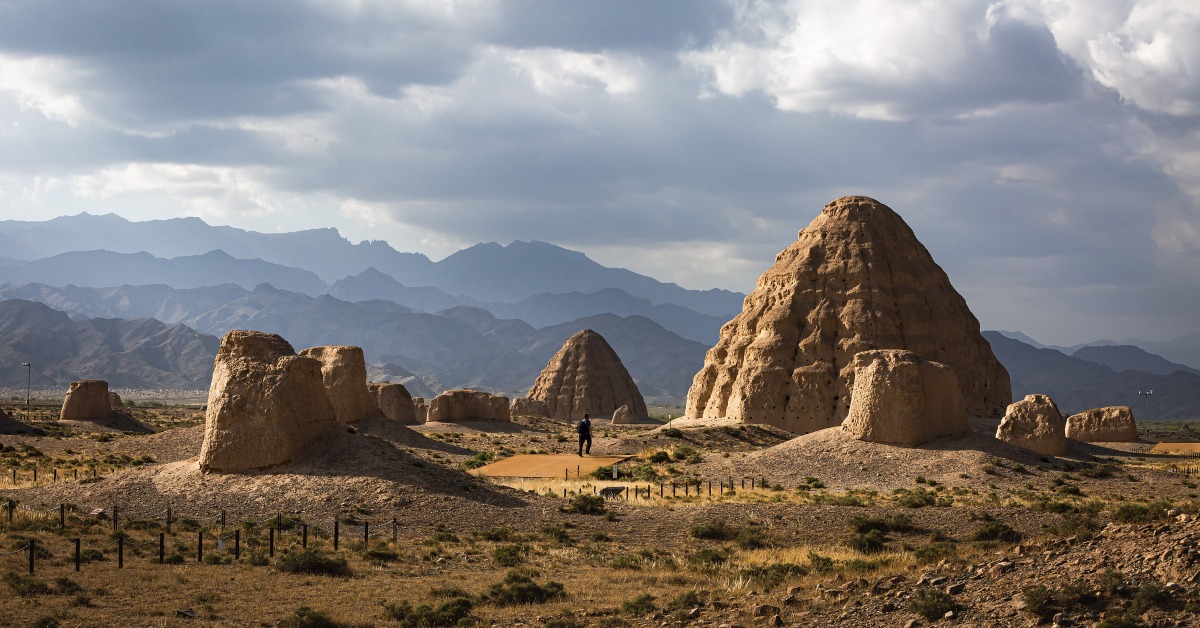
Kumul Han Dynasty Tombs.
Planning Your Visit: A Practical Guide
Visiting the Kumul Han Dynasty Tombs (哈密汉墓群) offers an extraordinary glimpse into China’s rich historical tapestry. Nestled in the heart of Xinjiang, this site attracts those eager to explore the ancient world beyond China’s well-trodden tourist paths. Here’s everything you need to know to make the most of your visit.
Getting There
Location: The Kumul Han Dynasty Tombs are located in the Kumul (Hami) region of Xinjiang. The nearest major city is Urumqi, which is approximately 800 kilometers away.
Transportation:
– By Air: The Hami Airport (HMI) offers domestic flights from major cities like Urumqi and Beijing. From the airport, you can take a taxi or arrange for a hotel transfer to the tombs.
– By Train: Hami is well-connected by rail. You can take a train from Urumqi to Hami, which takes about 12 hours. Once in Hami, local taxis or buses can take you to the tomb site.
– By Road: If you prefer a road trip, renting a vehicle is a great choice, allowing you to enjoy the stunning desert landscapes along the way.
Opening Hours
The Kumul Han Dynasty Tombs are typically open from 8:00 AM to 6:00 PM daily, allowing ample time for exploration. To avoid the crowds, consider visiting early in the morning or later in the afternoon.
Tickets and Tours
Admission Fees: Tickets are reasonably priced, making it accessible for most travelers. Check the official site or local tourism information for the latest prices.
Guided Tours: While the site can be explored independently, hiring a local guide can enhance your experience. They can provide insights into the history and significance of the tombs, making the visit more enriching. Look for guides who speak your language for a smoother experience.
What to Expect
The Tombs: The Kumul Han Dynasty Tombs are a marvel of ancient architecture, showcasing burial practices from the Han Dynasty. Expect to see well-preserved tomb chambers and artifacts that speak to the lives and beliefs of those interred here.
Exhibits: In addition to the tombs themselves, the site often features exhibitions of archaeological finds, artifacts, and reconstructions that illuminate the cultural context of the era.
Photography: The tombs and their surroundings offer stunning photography opportunities. Be mindful of any restrictions on photography within certain areas.
Facilities and Amenities
Restrooms: There are restroom facilities available on-site. It’s advisable to carry some toilet paper, as supplies may be limited.
Food and Drink: While there are usually no dining options directly within the tomb complex, local eateries can be found in Hami. Consider packing snacks and water for your visit, especially if you plan to spend a significant amount of time exploring.
Nearby Attractions
After visiting the tombs, consider exploring other nearby attractions:
– Hami Museum: Offers insights into the local history and culture of the region.
– Hami Melon Gardens: Known for its sweet melons, take a moment to enjoy the local produce.
– Desert Landscapes: The surrounding area features stunning desert scenery, perfect for outdoor enthusiasts and photographers.
Practical Tips
- Dress Appropriately: The region can experience extreme temperatures, so dress in layers. Comfortable walking shoes are a must, as you’ll be exploring uneven terrain.
- Stay Hydrated: Xinjiang’s arid climate means it’s easy to get dehydrated. Carry a water bottle with you.
- Respect Local Customs: As with any cultural site, be respectful towards the traditions and customs of the local populations.
Conclusion
A visit to the Kumul Han Dynasty Tombs is not only a journey through ancient history but also an opportunity to experience the unique culture of Xinjiang. With careful planning and an adventurous spirit, your visit will surely be an unforgettable chapter in your travel story. Enjoy your exploration of this remarkable site!
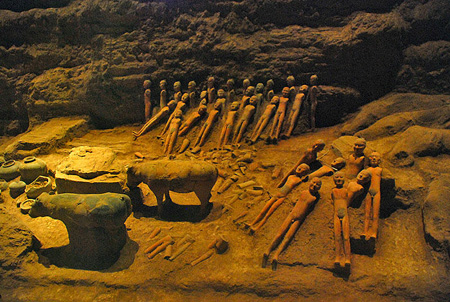
Kumul Han Dynasty Tombs.
Tickets: Prices, Booking, and Tips
Visiting the Kumul Han Dynasty Tombs is a fascinating journey into China’s rich historical tapestry, and securing your tickets is a straightforward process. Here’s everything you need to know about ticket prices, booking options, and helpful tips for your visit.
Ticket Prices
As of now, the entrance fee to the Kumul Han Dynasty Tombs typically ranges from ¥30 to ¥50 (approximately $5 to $8 USD), depending on the season and any special exhibitions that may be taking place. Children, students, and seniors often receive discounted rates, so it’s worthwhile to bring identification if you fall into one of these categories.
Booking Tickets
You can purchase tickets at the entrance of the tombs, which allows for a spontaneous visit. However, during peak tourist seasons or weekends, you might encounter longer wait times. To avoid this, consider booking your tickets in advance through official tourism websites or local travel agencies. Some platforms may also offer combo tickets that include access to nearby sites or guided tours, enhancing your overall experience.
Tips for Your Visit
-
Timing Your Visit: The tombs are open daily from 8:00 AM to 7:00 PM. Early mornings or late afternoons are ideal for avoiding crowds and enjoying a more serene atmosphere.
-
Guided Tours: Engaging a local guide can significantly enrich your experience. They can provide insights into the history and significance of the tombs, which might not be available through signage alone.
-
Exhibits and Surroundings: Don’t miss the additional exhibitions on-site, including a beautiful garden and a museum showcasing artifacts from the Han Dynasty. A combined visit can offer a more comprehensive understanding of the cultural context.
-
Accessibility: The site is relatively compact, making it easy to explore within an hour. However, be prepared for some tight spaces within the tombs, reminiscent of the Catacombs in Paris.
-
Photography: While photography is generally allowed, be respectful of the historical significance of the site. Avoid using flash and be considerate of other visitors.
By planning ahead and taking advantage of the resources available, your visit to the Kumul Han Dynasty Tombs can be both enlightening and enjoyable, allowing you to step back in time and appreciate the artistry and culture of ancient China.
How to Get There: A Complete Transportation Guide
Getting to the Kumul Han Dynasty Tombs
Visiting the Kumul Han Dynasty Tombs (哈密汉墓群) is a fascinating journey into the depths of Chinese history, particularly the Han Dynasty. Getting there might seem challenging, but with a little planning, you can navigate your way to this remarkable historical site with ease. Below is a comprehensive transportation guide to help you reach the Kumul Han Dynasty Tombs.
1. Arriving in Kumul (Hami)
Air Travel
The nearest airport to the Kumul Han Dynasty Tombs is Hami Airport (HMI), which is approximately 15 kilometers away from the city center. Several domestic airlines operate flights to Hami from major cities in China, including Urumqi, Beijing, and Xi’an. Once you arrive, you can take a taxi or a rideshare service directly to the tombs.
Train Travel
For those traveling overland, Kumul is well-connected by train. The Hami Railway Station serves as a hub for trains coming from various parts of China, including Urumqi and Lanzhou. High-speed trains are available and offer a comfortable journey. After arriving at the station, taxis and local buses can take you to the tombs.
2. Local Transportation Options
Taxis
Taxis are readily available in Kumul and are a convenient way to reach the tombs. Fares are reasonable, but it’s advisable to confirm the price or ensure the meter is running before you start your journey. The drive from the city center to the tombs typically takes about 20-30 minutes.
Public Buses
If you’re looking for a budget-friendly option, public buses are an excellent way to explore the city. However, routes and schedules may not always be in English, so having a translation app or asking locals for help can be beneficial. Look for buses heading to the Han Dynasty Tombs or nearby landmarks.
3. Exploring the Tombs
Entry and Guided Tours
Once you arrive at the Kumul Han Dynasty Tombs, you’ll find that entry usually includes access to a guided tour, which is highly recommended for a full understanding of the site’s historical significance. If you prefer a more in-depth exploration, consider hiring a private guide who can provide personalized insights.
Accessibility
The tombs are situated in a serene environment, making for a pleasant visit. The walking paths are relatively well-maintained, but be prepared for some uneven terrain. Comfortable footwear is advised.
4. Additional Tips
- Language Barrier: While some signs may be in English, it’s helpful to have basic Mandarin phrases ready or a translation app on your phone to communicate with locals.
- Weather Considerations: Kumul can experience extreme weather conditions, so check the forecast before your trip and dress accordingly.
- Timing Your Visit: The tombs are typically less crowded during weekdays, making for a more peaceful experience. Plan your visit early in the day to avoid the midday sun and enjoy the serene ambiance.
Conclusion
Reaching the Kumul Han Dynasty Tombs is a straightforward process, whether you prefer flying, taking a train, or traveling by bus. With its breathtaking historical significance and serene landscapes, a visit to these ancient tombs promises to be a memorable highlight of your trip to China. Prepare ahead, and enjoy the journey back in time!
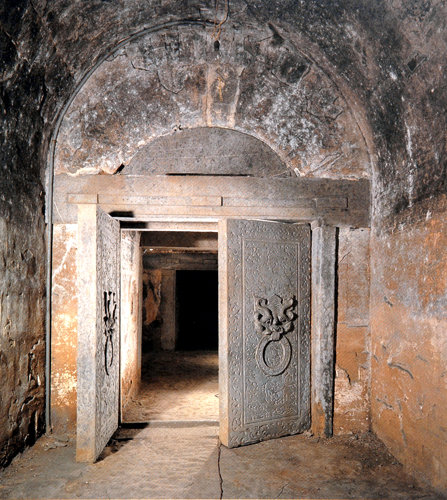
Kumul Han Dynasty Tombs.
Local Cuisine and Accommodation Nearby
When visiting the Kumul Han Dynasty Tombs, immerse yourself in the local culture by indulging in the delicious cuisine and comfortable accommodations nearby.
Culinary Delights
1. Local Xinjiang Cuisine:
The Kumul area is renowned for its flavorful Xinjiang cuisine, which reflects the diverse cultures of the region. Be sure to try:
– Laghman: Hand-pulled noodles served with a flavorful stir-fried mix of vegetables and meats, seasoned with aromatic spices.
– Dapanji: A hearty dish featuring chicken, potatoes, and wide noodles, all simmered in a spicy sauce. It’s a must-try for those who enjoy a bit of heat!
– Kebabs: Grilled skewers of lamb or chicken seasoned with cumin and chili, perfect for a quick bite after a day of exploration.
2. Recommended Restaurants:
– Kumul Xinjiang Restaurant: Known for its authentic dishes, this restaurant offers a cozy atmosphere where you can savor traditional flavors while enjoying local hospitality.
– Kebabs & Noodles: A casual eatery that specializes in grilled meats and hand-pulled noodles. It’s a favorite among locals and visitors alike for its delicious flavors and generous portions.
Places to Stay
After a day of exploring the fascinating tombs, unwind at one of the nearby accommodations that provide comfort and accessibility.
1. Kumul Grand Hotel:
This modern hotel offers spacious rooms with stunning views of the surrounding landscapes. With amenities such as free Wi-Fi, a fitness center, and an on-site restaurant serving both local and international cuisine, it’s an excellent choice for travelers seeking comfort.
2. Xinjiang Yijia Hotel:
A budget-friendly option that doesn’t compromise on quality. Guests appreciate the clean rooms and friendly staff. The hotel is conveniently located, making it easy to access the Kumul Han Dynasty Tombs and local dining options.
Conclusion
Whether you’re savoring the rich flavors of Xinjiang cuisine or resting in a comfortable hotel, your visit to the Kumul Han Dynasty Tombs will be a fulfilling experience that captures the essence of this historic region. Enjoy your journey through time and taste!
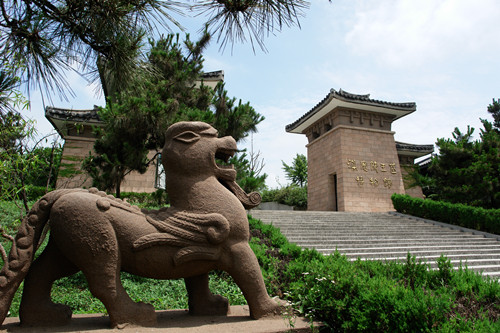
Kumul Han Dynasty Tombs.
Frequently Asked Questions
Common Inquiries for Visitors to Kumul Han Dynasty Tombs
1. What are the Kumul Han Dynasty Tombs?
The Kumul Han Dynasty Tombs, located in the Xinjiang region of China, are ancient burial sites from the Han Dynasty, showcasing the rich history and culture of the era. These tombs are notable for their elaborate designs and the artifacts found within, providing insight into burial practices and beliefs about the afterlife.
2. How do I get to the Kumul Han Dynasty Tombs?
The tombs are accessible by public transportation or private vehicle. If traveling from nearby cities, consider taking a bus or taxi for convenience. Check local transportation schedules as they can vary.
3. What are the opening hours?
The Kumul Han Dynasty Tombs are typically open from 8:00 AM to 7:00 PM daily. It’s advisable to verify the current hours before your visit, as they may change during holidays or special events.
4. Is there an admission fee?
Yes, there is usually an admission fee to visit the Kumul Han Dynasty Tombs. The ticket may also grant access to adjacent museums or exhibitions, so it’s worth checking for any combo tickets that can enhance your experience.
5. Are guided tours available?
Guided tours are often available and can greatly enhance your visit by providing deeper insights into the history and significance of the tombs. English-speaking guides may be arranged, so consider booking in advance to ensure availability.
6. What should I expect during my visit?
Expect a fascinating exploration of ancient burial sites, including well-preserved artifacts and unique architectural features. The site is relatively compact, so plan for about an hour to fully appreciate what it has to offer.
7. Are there facilities available on-site?
Yes, there are facilities available, including restrooms and possibly a café or shop. However, amenities may be limited, so it’s wise to bring water and snacks if you plan on spending a considerable amount of time exploring.
8. Can I take photos at the site?
Photography is generally allowed, but be mindful of any specific rules or restrictions in certain areas, especially where artifacts are displayed. Always respect the site and other visitors while capturing your memories.
Final Thoughts on Your Trip
As your journey to the Kumul Han Dynasty Tombs draws to a close, take a moment to reflect on the profound history and culture that envelops this remarkable site. Nestled in the heart of the Xinjiang region, these ancient burial grounds offer a captivating glimpse into the Han Dynasty’s past, showcasing the artistry and ingenuity of a civilization that flourished over two millennia ago.
Exploring the tombs is not just a walk through history; it’s an invitation to connect with the lives of those who once roamed these lands, their dreams and aspirations preserved in stone. The meticulous craftsmanship of the tombs, the intriguing artifacts, and even the innovative features like ancient drainage systems remind us of the sophistication of the era.
While Kumul may not be on everyone’s travel radar, its serene atmosphere and the absence of the usual crowds provide a unique opportunity for contemplation and appreciation. So, as you leave, carry with you the stories of the past, the beauty of the surrounding landscapes, and a deeper understanding of China’s rich heritage. This is not merely a visit; it’s an experience that lingers long after you’ve departed. Safe travels, and may your adventures continue to inspire!